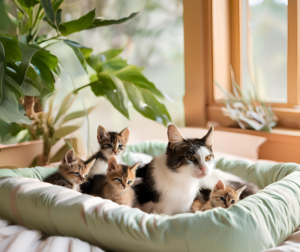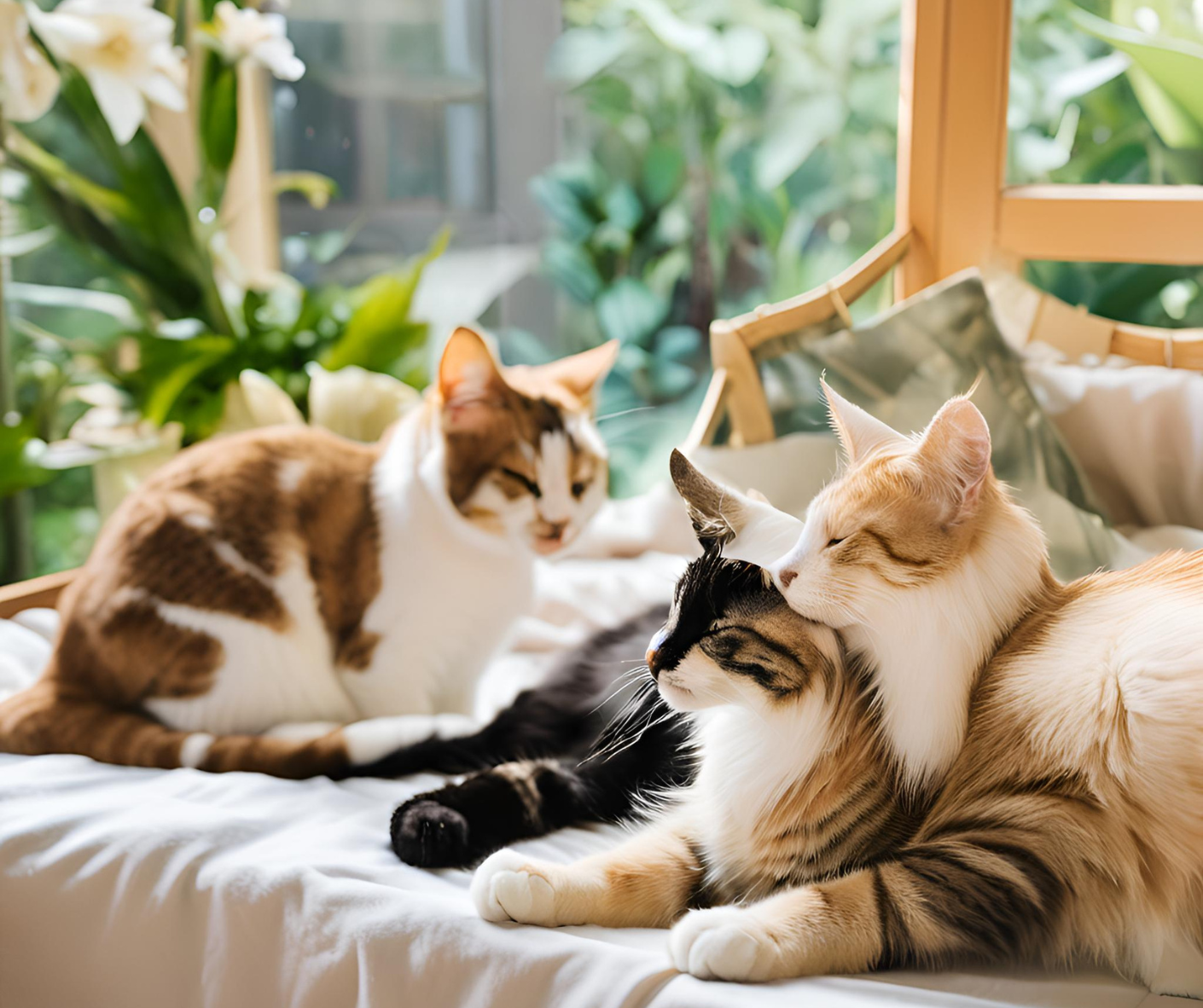If you have more than one cat then you might have seen your cats groom each other. You may wonder why they groom each other.
You know cats are fascinating creatures and their behaviors are full of mystery.
This behavior is known as allogrooming. It serves several purposes for cats from social bonding to health benefits.
So let’s learn the reasons why cats groom each other and what they mean with this behavior.
1. Building Social Bonds
One of the primary reasons cats groom each other is to build and maintain their social bonds.
Not only cats but other animals like lions also show this behavior. This is a way of building a relationship between them.
Grooming signals that they trust and love each other. Sometimes they clean their fur to show another cat that he or she loves them.
Especially two cats who grow up together do this to send a loving and friendly message to each other. They also do this to reinforce their social hierarchy.
2. Marking Territory and Familiarity
When cats groom each other their body scent spreads from one to another. This scent mark usually helps them find their family members.
For those wondering why do cats groom each other this act of sharing scent makes them feel united and safe when they stay with their family.
During this time they also spread their saliva and this scent helps to reduce stress especially when they are in a new environment.
A new environment can make them feel unsafe but after smelling their family member’s body scent they feel secure.
3. Health Benefits of Grooming
Cats have some health benefits when they groom each other. You know cats are very clean animals. They clean their bodies by licking themselves.
But some body parts they cannot reach like the back of the head and certain parts of the neck.
When two cats groom each other, they can easily clean body parts they cannot reach alone.
It helps them clean their whole body and they feel healthy and happy.
Grooming helps cats’ blood circulation and prevents matting of fur especially for those with long hair.
4. Showing Dominance and Social Order
Some cats display this behavior to establish social hierarchy. The dominant cat in the group initiates grooming to show its role as a leader.
The other cats allow themselves to be groomed which may show submission or acknowledgment of the other’s social position.
5. Reducing Stress and Promoting Relaxation
Although I have already talked about this when they groom each other they reduce their stress.
Let’s discuss it in detail,
When they groom each other they release endorphins which are natural feel good chemicals that reduce stress. So cats groom and reduce their stress by releasing endorphins.
6. Instinctual Behavior Learned from Their Mother

A mother cat grooms her child to clean and comfort them and to bond with her child. Kittens learn this behavior from their mother and as they grow up they do this with other cats to bond with them using their mother’s strategy.
They do this not only with other cats but also with humans to bond and show love.
7. When Grooming Each Other Becomes a Problem
Generally grooming each other is normal behavior for cats.
But if you notice that your cat is grooming excessively to the point of causing skin irritation it could indicate stress or anxiety.
Excessive grooming may also indicate that your cat has a skin problem such as allergies or an infection.
In that case you should consult a veterinarian to ensure the safety of your beloved cat.
Conclusion
Grooming is a natural and normal behavior in cats. If you have ever wondered why do cats groom each other it is a way they show love and create a social connection between them.
Some cats do this a little while others groom each other many times a day. Because it’s normal behavior there’s no need to worry or feel nervous after watching them groom each other.
One thing you want to make sure of is whether your cat has any skin problems. If you want to confirm this then consult a veterinarian.
Thank you…



